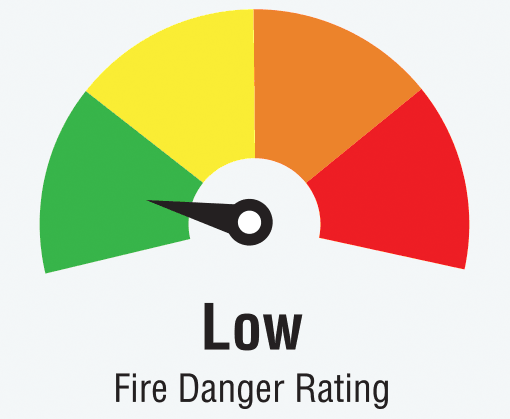
Goal: By 2030, 50 per cent of all vehicle kilometres travelled are from zero-emission vehicles.
Passenger transportation is the only major sector that has seen an increase in GHG emissions and increases in personal vehicle travels account for 85% of the total gap towards meeting Whistler’s 2030 climate targets. Transit and larger commercial fleets account for another 6% of emissions making transportation account for 60% of Whistler’s emissions.
Electric and low carbon vehicles are growing quickly in market share and have reached almost 10% of new vehicle sales in BC in 2019. This is ahead of BC’s new Zero Emissions Vehicle mandate and the highest level in North America, beyond even California. With prices continuing to decline, and price parity for EVs expected as early as 2022, the adoption of electric vehicles has the potential to further grow.
To achieve the Big Move of 50% of all motor-vehicle kilometer travelled (vkt) by zero emission vehicles will require that, by the end of the decade, nearly all new light-duty vehicles will need to be zero emissions. It will also require that highly used vehicles – such as taxis, ride hailing and business fleets – lead the adoption of zero emission vehicles, with almost all vehicles zero emissions by 2030.
This Big Move can also effectively influence GHG emissions outside the RMOW’s borders. A main barrier to broad EV adoption is for drivers to know they can find reliable and convenient charging at the places they visit. With over 3 million annual visitors, 70% of whom arrive by car, Whistler can have an outsized impact by enabling electric transport beyond the municipal borders. It is also a key opportunity to reduce tourism related GHG emissions and thereby Big Move 3.
Success for this Big Move will require a comprehensive approach that provides accessible and reliable public charging, provide business incentives to accelerate the shift to low carbon fleets, and increasingly require supportive parking policies and zero-emission zones.
Key initiatives
1. Expand public EV charging network for residents and visitors
2. Incentivize residential (single-family and multi-unit) building EV charging installations by providing top-ups to provincial incentives or by adopting EV-ready building requirements
3. Support the shift to EVs through awareness and outreach initiatives for residents, commuters and visitors
4. Strategically increase parking costs to discourage the use of single occupancy vehicles
5. Electrify private and public fleets to take on a leadership role and establish Whistler as an EV friendly community
6. Host webinars and other outreach events to inform fleet operators on Medium and Heavy-Duty fleet electrification
7. Work with BC Transit to move to zero emissions transit fleet
Your turn
Drive a smaller car. Trucks and full-sized SUVs often use twice as much fuel compared to cars. The global shift to SUVs and trucks is the second largest source of increasing carbon emissions and more than the heavy industry, aviation and trucking sectors. To learn more about vehicle fuel efficiency and carbon pollution, check out Natural Resources Canada’s Fuel Consumption Guide(link is external).
Switch to an electric vehicle. Technology improvements mean electric vehicles (EVs) are not as expensive as you think. Electricity costs are only 15-25% of fuel costs, and maintenance costs are lower too. Over the lifecycle of the car, EVs can break even. And the cost of an EV with a range above 400 km is also becoming more affordable. Interested in switching? There are federal and provincial incentives for up to $14,000, as well as $700 for home chargers. Learn more about incentives and rebates for EV charger purchase and installation. Live in a condo and want to help your strata add EV chargers? View the Guide to EV Charging for Apartments and Condos.
Carpool. The cost of driving a single-occupancy vehicle goes far beyond the impact on your wallet. Requiring 4,000 pounds of steel to move one person adds more greenhouse gases to the environment and degrades transport infrastructure. Learn more about Whistler’s carpool parking pass.
EV charging network. The RMOW received federal funding to substantially increase Whistler’s electric vehicle (EV) charging network. This grant will bring 14 new charging stations to the Day Lot Parking areas (Lot 1, 2, 4) as well as the Conference Parking Lot. These strategic parking areas were chosen as the best locations for EV use within the community. The intent is to make them accessible for locals and enable tourists to choose EVs when travelling to Whistler. Learn more about EV charging in Whistler.
EV strategy. The Electric Vehicle Strategy will be presented to Council on June 7, 2022. The Strategy aims to identify and implement actions that the RMOW can take to achieve the Big Move 2 goal that 50 per cent of all vehicle kilometres travelled within Whistler are by zero-emission vehicles, by 2030.
The Electric Vehicle (EV) Strategy provides a framework supporting Whistler’s 2020 Climate Action Big Moves Strategy’s overall goal to reduce greenhouse gas emissions within Whistler by 50 per cent below the 2007 levels by 2030. Personal vehicle transportation is Whistler’s largest source of GHG emissions, accounting for 54 per cent of Whistler’s community wide emissions in 2019 and 40 per cent in 2020, and is the main challenge to achieving our climate targets.
Increasing the use of EVs will be key to achieving this goal, while prioritizing the encouragement of active transportation, such as walking and cycling, and using transit. The actions identified in the EV Strategy aim to accelerate EV adoption for residents, the commuter workforce, and businesses.
RMOW Electric Vehicle Strategy 2022
The strategy development was funded with support from the EMOTIVE Clean Transportation Targets and Planning Pilot Funding Program (CTTP) grant.
- Between c tCO2e below 2019
- Between 12% and 14% reduction below Business as Usual
- Whistler Transportation Action Plan 2018 – 2028
Official Community Plan – related goals and policies
- Chapter 10: 10.2. Goal: Substantially reduce GHG emissions from vehicles and transportation.
- Chapter 11: 11.3. Goal: Minimize GHG emissions created by the transportation system
- 11.7. Goal: Ensure the transportation system respects Whistler’s natural environment, minimizes climate impacts and improves the livability of the resort community.
CECAP
- 6.1.4.1 – Support the development of, and increased access to, reduced-carbon mobile fuel options such as natural gas, appropriate biofuels, and electrical charging stations across the community.
- 6.1.4.2 – RMOW to aggressively advance the average fleet GHG and energy efficiency of the municipal vehicle fleet
- 6.1.4.4 – Integrate electric and/or lower carbon fuel vehicles into existing private and public fleets (transit/delivery/taxis/shuttles).
- 6.1.4.9 – Invest in electric vehicle integration across municipal fleet.
- 6.1.4.11 – Develop a social marketing initiative to drive the use and purchase of more efficient vehicles
- Lead: Environmental Stewardship
- Support: Transit and Transportation Demand Management, TAG, Planning, Building Department, Infrastructure Services
- Partnerships: BC Hydro, Whistler Blackcomb, Municipalities within the Sea to Sky Corridor, Whistler Housing Authority, taxi/transportation suppliers
Contact
Climate and Environment
climatechange@whistler.ca




